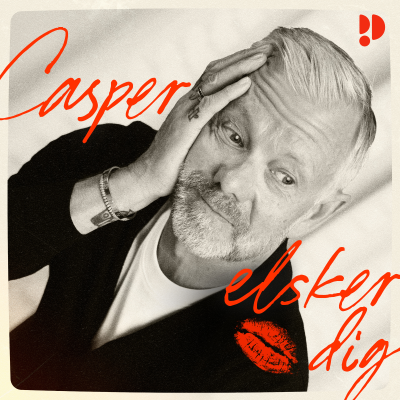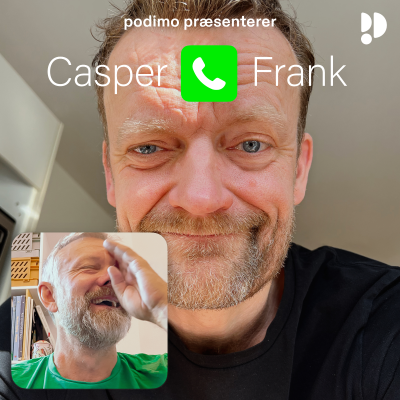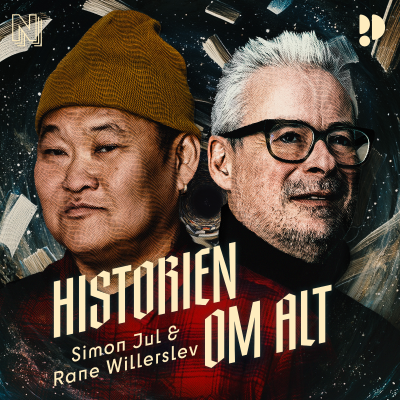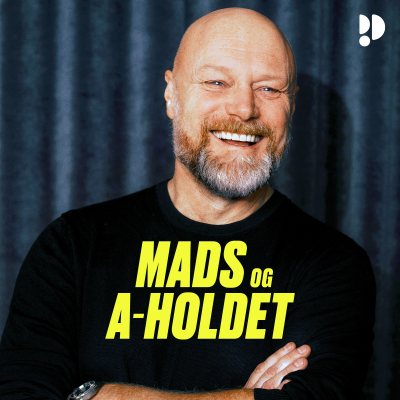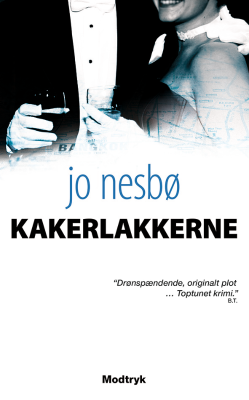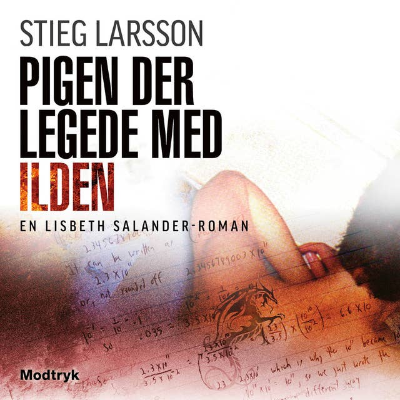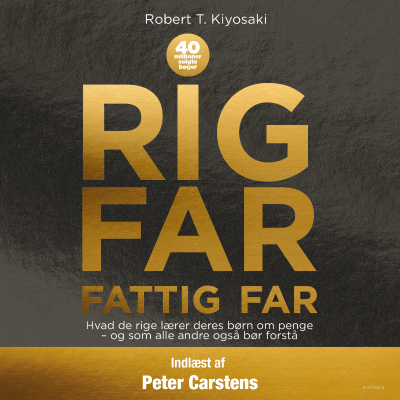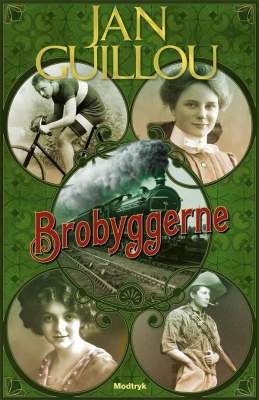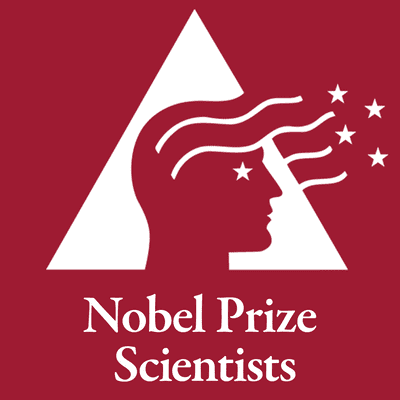
Nobel Prize Scientists
Begrænset tilbud
1 måned kun 9 kr.
Derefter 99 kr. / månedIngen binding.

Mere end 1 million lyttere
Du vil elske Podimo, og du er ikke alene
Rated 4.7 in the App Store
Læs mere Nobel Prize Scientists
Every year, recipients of the Nobel Prize participate in the programs of the Academy of Achievement, sharing their groundbreaking discoveries with the Academy's members and student delegates. Now you can see and hear many of these intimate and fascinating presentations by the world's great thinkers. Biologists and economists, physicists and chemists, physicians and medical researchers -- all share their knowledge in these podcasts, recorded at the Academy's International Achievement Summit. You can learn how they explore the fundamental forces of the universe, plumb the deepest mysteries of subatomic articles, investigate the molecular structures of life itself, pioneer new strategies for the treatment and prevention of disease, or explain the gyrations of a global economy. You can also hear how, from ordinary beginnings, they found their passions in life, how they prepared themselves to excel, and how they made the discoveries that have won them the world's highest honor for achievement in the science.
Alle episoder
28 episoderThe chemist Gertrude Elion (1918 -1999) was a trailblazer for women in American science, and the recipient of the 1998 Nobel Prize in Medicine. At an early age, her ambition to find new medicines led her to the study of chemistry, but when she graduated from college at age 19 in 1937, she found it almost impossible to land a job in the field. Most employers would not hire a woman to perform scientific work. Gertrude Elion refused to be deterred. She worked wherever she could, often for little or no money, until at last she found a stable position at Burroughs Wellcome, where she was allowed to fulfill her potential as a scientist. For more than 40 years, she studied the chemical composition of disease cells. Within a few years, this approach led to the development of the first successful drugs for the treatment of acute leukemia. As her responsibilities expanded, she began led larger and larger teams, discovering compounds such as allopurinol, used for the treatment of gout and to relieve the side effects of chemotherapy. Her discovery of azathioprine, which suppresses the immune system's rejection of foreign tissue made kidney transplants between unrelated donors possible. She later led the team that developed accyclovir, the first successful anti-viral medication. Hundreds of thousands of people around the world owe their lives to Gertrude Elion's patient determination. In 1998, her discoveries won her the Nobel Prize for Medicine, although she was not a medical doctor and had never received a doctorate in her own field. In this podcast, recorded during the Academy of Achievement's 1998 Summit in Jackson Hole, Wyoming, she downplays the scope of her own scientific achievement, while recalling the challenges she encountered as a woman in the world of science and medicine.
The astrophysicist and cosmologist George Fitzgerald Smoot III received the 2006 Nobel Prize in Physics for work that led to the measurement of microwave background radiation in the universe. A graduate of MIT, Smoot received dual bachelors' degrees in mathematics and physics, and received his Ph.D. in particle physics in 1970. As a researcher at Lawrence Berkeley National Laboratory, Smoot began to study cosmic microwave background (CMB) radiation. This radiation is the reverberation of the Big Bang, the explosion that created the universe. Smoot devised a plan for equipping a satellite with microwave detection technology measure the radiation without interference from the earth's polluted atmosphere. NASA accepted Smoot's plan, launching the Cosmic Background Explorer (COBE) in 1989. The minute fluctuations in background radiation that OZCBE detected have enabled scientists to form a more accurate picture of the origins of the universe. Professor Smoot has shared his findings with the general public in the book Wrinkles in Time. Professor Smoot has been called "the planet's most popular astrophysicist." In 2009, he appeared as a contestant on a television quiz program called "Are You Smarter Than a Fifth Grader?" He was, and won a million-dollar prize. In this podcast, recorded at the Academy of Achievement's 1994 Summit in Las Vegas, Professor Smoot told the Academy's student delegates how he was first drawn to the beauty of science. He shares his experiences at the South Pole. He urges the student delegates to follow their own goals and have their own adventures in life. Following his presentation, he is joined by Dr. Francis Collins, Director of the Human Genome Project (later Director of the National Institutes of Health) and Richard J. Roberts, recipient of the 1993 Nobel Prize in Medicine. The three scientists engage in a brief discussion of ethical issues related to progress in research.
Rudolph "Rudy" Arthur Marcus is a Canadian-born chemist who received the 1992 Nobel Prize in Chemistry. A trailblazing researcher, Dr. Marcus is known for his work in many fields of theoretical chemical kinetics. He was awarded the Nobel Prize for elucidating a thermodynamic and kinetic framework for describing one electron outer-sphere electron transfer. "Marcus theory," provides a mathematical method to determine how fast or slow, or in what direction, electrons jump between molecules without breaking chemical bonds, explaining the electron transfers which make it possible for plants to store energy from sunlight and use it to fuel growth, or for humans to store energy from a meal and use it later to power the body's activities. In addition to the Nobel Prize, he has received the Irving Langmuir Award, the Wolf Prize in Chemistry, the Linus Pauling Award and the National Medal of Science. In this audio podcast, recorded at the Academy of Achievement's 1993 Summit in Glacier Park, Montana, Dr. Marcus recounts his life and career as a chemist. He encourages the Academy's students to define their goals as the pursuit of excellence, rather than success, and emphasizes the importance of meeting life's unexpected challenges.
The pioneering biochemist Arthur Kornberg (1918 - 2007) was awarded the 1959 Nobel Prize in Medicine for discovering the means by which DNA molecules are duplicated in the bacterial cell -- landmark research that helped advance our understanding of the hereditary process. He was also honored for devising the procedure for reconstructing this duplication process in the test tube. Dr. Kornberg was born in Brooklyn, New York, and educated in the city's public schools. He received his undergraduate degree in science from the City College of New York, and a medical degree from the University of Rochester in 1941. A commissioned officer in the U.S. Public Health Service, he was assigned to the Navy as a ship's doctor during World War II. Following the war, he was posted to the National Institutes of Health, where he organized and directed the program in enzyme research. After leaving NIH, he chaired the department of microbiology at Washington University in St. Louis. In 1959, the same year he received the Nobel Prize, he moved to Stanford University, in Palo Alto, California. At Stanford, he organized the new department of biochemistry, a department he chaired for the following decade. In addition to the Nobel Prize, he is the recipient of many awards, including his nation's highest scientific honor, the National Medal of Science. His autobiography, For the Love of Enzymes: The Odyssey of a Biochemist, was published by Harvard University Press in 1989. Dr. Kornberg addressed the Academy of Achievement at its 1992 gathering in Las Vegas, Nevada. In this podcast, recorded on that occasion, he discusses the challenges and rewards of a life in science. He describes the discipline that the practice of science requires, while sharing his own passionate curiosity about the chemistry of life.
Richard Taylor shared the 1990 Nobel Prize in Physics with his colleague Jerome Friedman for a series of experiments proving demonstrating that protons, neutrons, and the other elementary particles of the atom are in turn composed of smaller entities, known as quarks. Born in the town of Medicine Hat, in Alberta, Canada, Taylor earned his bachelor's and master's degrees at the University of Alberta in Edmonton, and his Ph.D. at Stanford, where he joined the High Energy Physics Laboratory. From its inception, he was involved in the design and construction of the Stanford Linear Accelerator Center (SLAC). The experiments run at SLAC in the late 1960s and early '70s involved scattering high-energy beams of electrons from protons and deuterons and heavier nucleii. The results provided the first experimental evidence that the protons and neutrons were made up of point-like particles, later identified to be the up-and-down quarks that had previously been proposed on theoretical grounds. The experiments also provided the first evidence for the existence of gluons. In this address to the Academy of Achievement, recorded at the 1991 Summit in New York City, Dr. Taylor recalls his collaboration with his fellow physicist Jerome Friedman and their discoveries of electron/proton scatterings. He discusses the role of leadership in team work and urges the students to take their time and enjoy the process of education. In extolling the importance of taking risks, he also relates the heavy price he paid for his own risk-taking.

Rated 4.7 in the App Store
Begrænset tilbud
1 måned kun 9 kr.
Derefter 99 kr. / månedIngen binding.
Eksklusive podcasts
Uden reklamer
Gratis podcasts
Lydbøger
20 timer / måned
